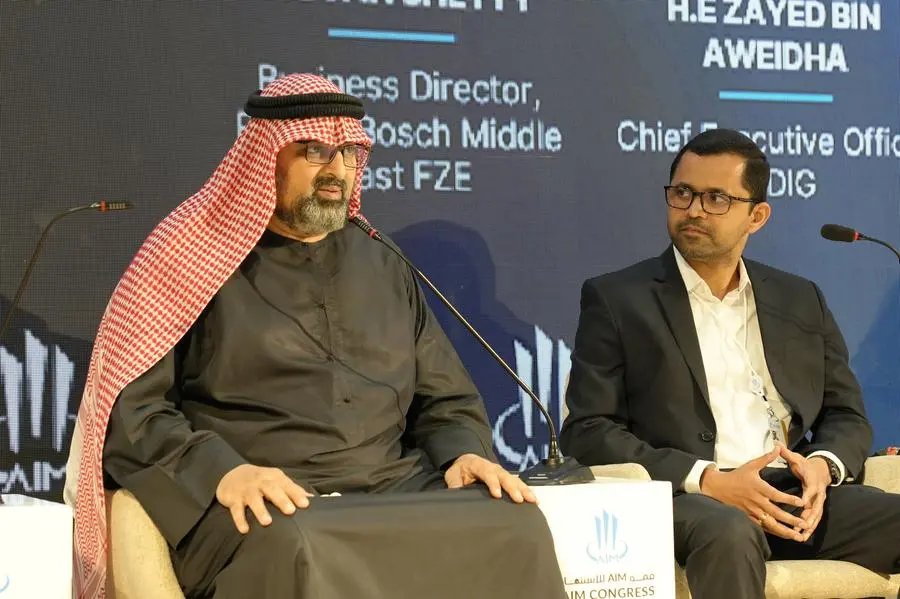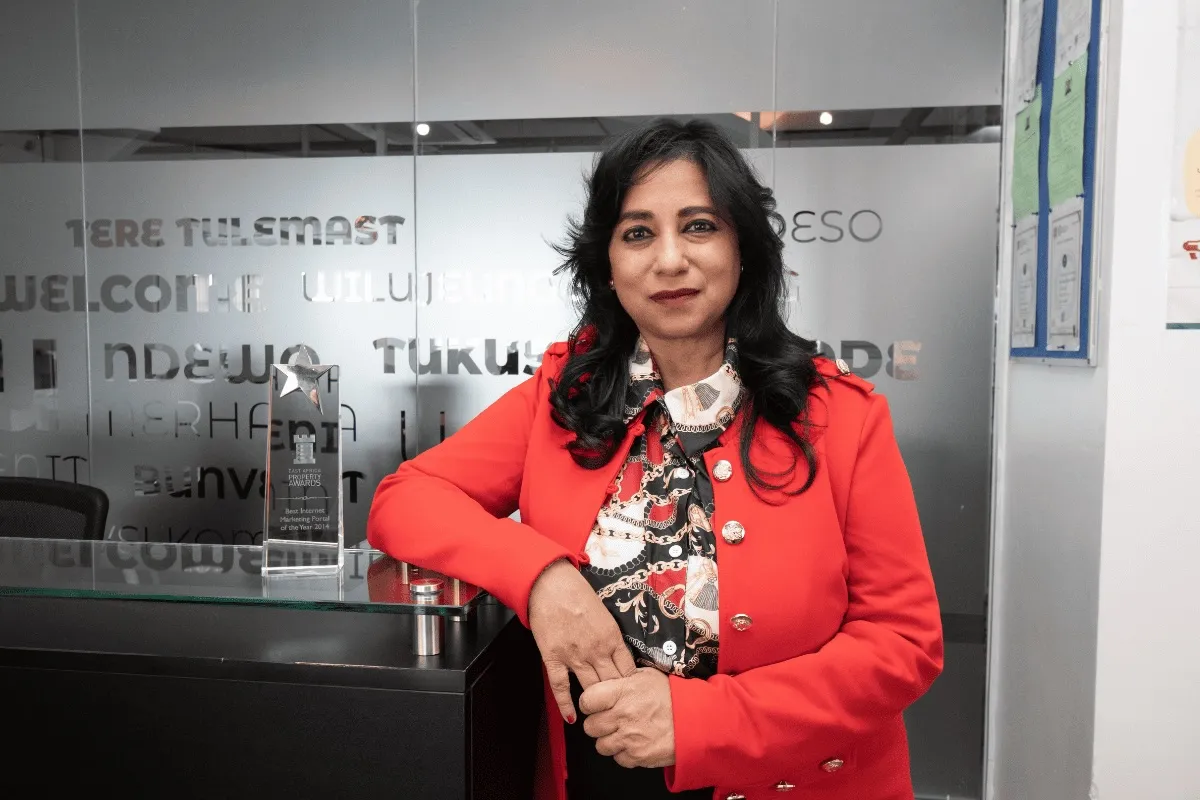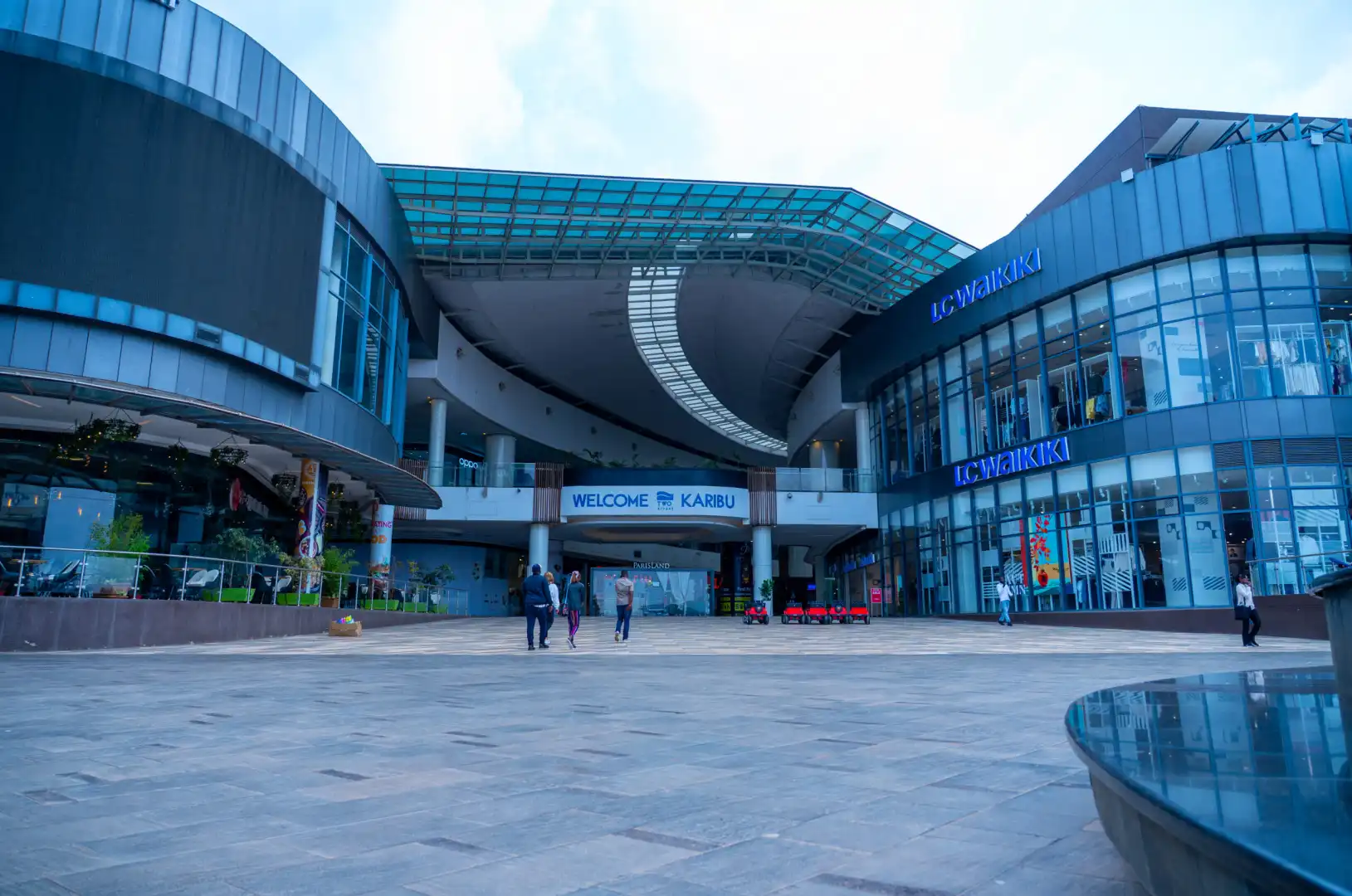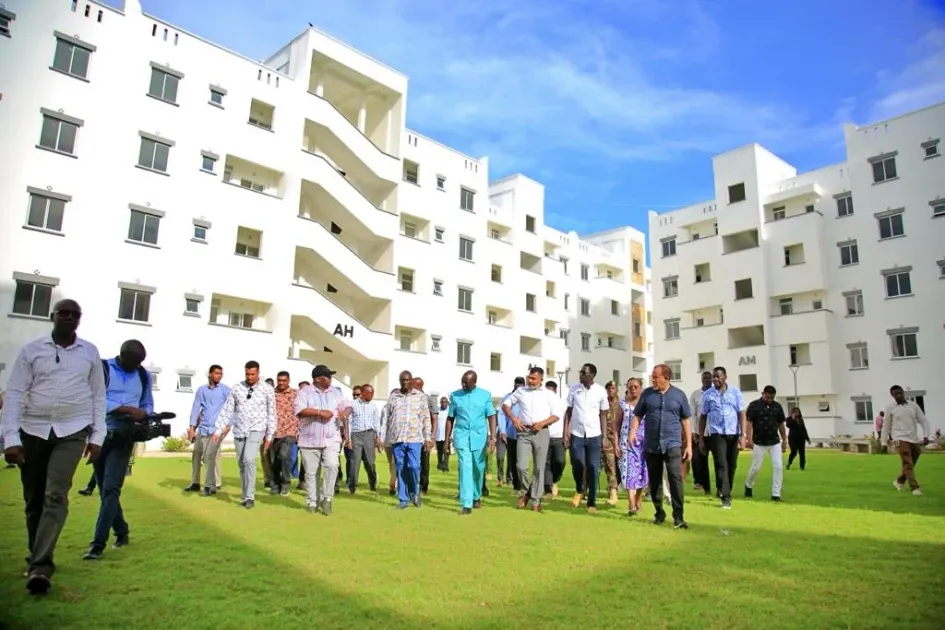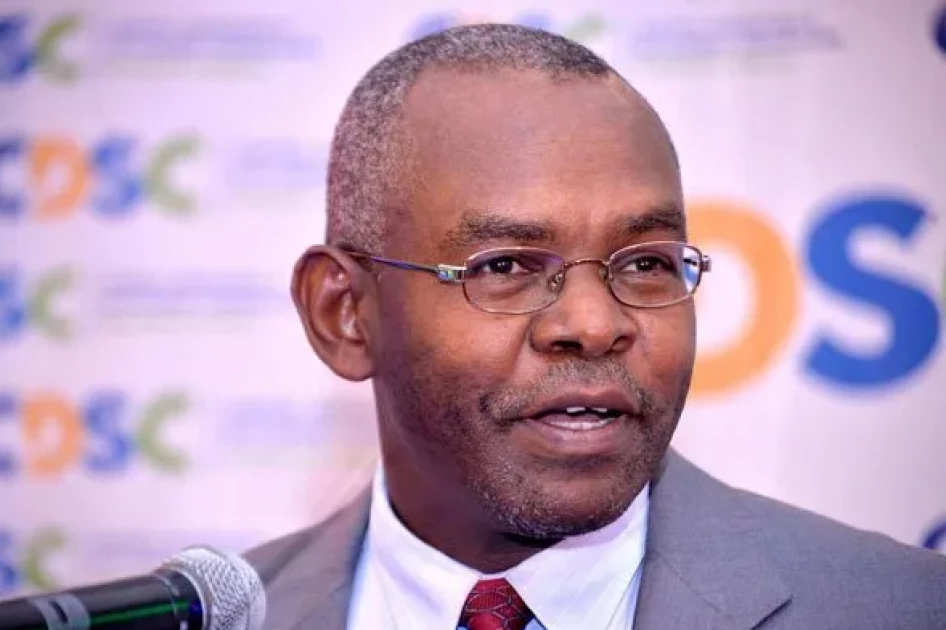In a bold and forward-looking address at the 14th Annual Investment Conference (AIM Congress 2025), held at the Abu Dhabi National Exhibition Centre from April 7 to 9, 2025, His Excellency Zayed bin Aweidha, CEO of Abu Dhabi Investment Group (ADIG), delivered a comprehensive keynote that examined global economic challenges while offering a nuanced perspective on the trajectory of the manufacturing and digital transformation sectors. The event, with its theme “Mapping the Future of Global Investment: The New Wave of a Globalized Investment Landscape: Towards a New Balanced World Structure,” attracted over 25,000 participants from 180 countries and featured more than 350 dialogue sessions and workshops on cutting-edge topics such as innovation, sustainability, and the evolution of the new economy.
Drawing on discussions across multiple international panels, the AIM Congress has become a catalyst for dialogue among business leaders, policymakers, and technology experts. In one of the most anticipated sessions—”Leaders’ Panel: Manufacturing 2030 – Key Trends Shaping the Industry”—His Excellency Zayed bin Aweidha highlighted not only the pressing global economic difficulties but also the fundamental shifts occurring as businesses and industries brace for the transformative changes ushered in by the next industrial revolutions.
Global Economic Landscape: A Precarious Balance
The geopolitical and economic environment remains a complex tapestry, marred by lingering aftershocks of previous crises and contemporary challenges that threaten global market stability. In his address, His Excellency underscored that while the world had shown remarkable resilience in bouncing back from crises such as the 2008 financial downturn, current indicators signal that the next crisis could be more severe. Economic stressors now include rising debt levels, heightened tariffs, and shifts in global trade policies.
Rising Tariffs and Trade Tensions
One of the significant factors intensifying current economic challenges is the imposition of tariffs by major economies. His Excellency specifically referenced recent actions by the US administration, noting that these tariffs on global trade could further exacerbate the fragility of international economic relations. The introduction of protectionist policies at a time when many global economies are still recovering places additional burdens on businesses already strained by high operating costs and disrupted supply chains. Critics argue that such measures, though aimed at protecting domestic industries, may ultimately lead to retaliatory measures, thereby stifling cross-border collaboration and innovation.
Economic Crises in Perspective
When reflecting on historical economic challenges, His Excellency compared the evolving situation to the 2008 crisis. At that time, markets were more robust, and governments had more fiscal space to implement expansive monetary policies. The current situation, however, involves a confluence of factors—from escalating geopolitical tensions to rapidly evolving digital technologies—that collectively elevate the risk of a more disruptive economic downturn. Analysts point to the critical need for adaptive fiscal policies and coordinated international action to address these structural vulnerabilities.
The Future of Manufacturing: From Industry 5.0 to Industry 6.0
An integral part of the conference was the dedicated discussion on the future of manufacturing, a sector that is undergoing significant transformation in the wake of digital innovations. During his session, His Excellency provided an in-depth overview of the ongoing shift from traditional manufacturing paradigms to those that leverage advanced digital technology.
Transition from Industry 5.0 to Industry 6.0
Industry 5.0 has largely been about integrating human creativity with machine efficiency to foster sustainable productivity. This phase was celebrated for its focus on personalized manufacturing and mass customization, achieved by striking a balance between human intelligence and robotic precision. However, His Excellency emphasized that the evolution into Industry 6.0 represents a transformative leap into a realm where comprehensive digital transformation is intertwined with advanced artificial intelligence.
In the era of Industry 6.0, companies are expected to implement pervasive AI systems that not only optimize production but also predict market trends and consumer behaviors with unprecedented accuracy. The digital transformation, in this context, is envisioned to streamline operations, reduce waste, and foster an agile and anticipatory manufacturing ecosystem. With the integration of big data analytics, the Internet of Things (IoT), and machine learning, businesses can reposition themselves to meet the rapidly changing demands of a globalized market.
Obstacles on the Path to Advanced Transformation
While the prospects of Industry 6.0 are exciting, His Excellency warned that the current financial challenges cast a long shadow over the ability of companies to invest in the necessary technological upgrades. In an environment marked by potential economic downturns, the allocation of capital towards futuristic technologies might be hindered by urgent survival strategies. Firms saddled with significant debt loads may find it particularly challenging to commit resources to R&D and digital transformation initiatives.
Moreover, the integration of AI and digital systems is not without its risks. Issues related to cybersecurity, data privacy, and the ethics of autonomous decision-making are all areas that require careful regulation and oversight. Governments and regulatory bodies around the world are only beginning to grapple with these challenges, emphasizing the need for robust frameworks to support this transition.
Corporate Migration: Redefining Global Business Dynamics
Another noteworthy trend emerging from the conference is the phenomenon of corporate migration. In the current high-cost economic climate, many companies are reassessing their operational models and relocating to regions that offer a more favorable cost structure. This migration is driven by a desire to reduce operating costs while capitalizing on emerging markets that provide new growth opportunities.
Drivers of Corporate Migration
Several factors are at play behind this strategic shift. Rising labor costs in developed economies, combined with the uncertainties of volatile political environments, are compelling businesses to seek out environments where they can maintain competitive advantages. By relocating operations to countries with lower human resource expenses and more streamlined regulatory frameworks, companies can optimize their cost structures and reinvest savings into innovation and expansion.
In addition, the digital era has facilitated remote work and decentralized business models, allowing companies to operate globally without the need for a centralized physical presence. This flexibility has accelerated the pace of corporate migration, as decision-makers recognize the strategic benefits of positioning their companies in regions that are not only cost-effective but also rich in untapped talent and market potential.
Impact on Global Economic Structures
The movement of corporations to new regions is having a profound impact on the global economic landscape. Established business hubs are witnessing shifts in their traditional roles as centers of commerce, while emerging markets are experiencing rapid economic growth and innovation. This redistribution of economic power could lead to a more balanced global economy, as countries that were once on the periphery of global trade become central players.
However, this process is not without its challenges. Companies relocating their headquarters or production facilities must navigate differences in regulatory environments, cultural practices, and market expectations. The success of such transitions depends on the ability of these organizations to adapt quickly and forge strong partnerships with local stakeholders. Policymakers in both source and destination regions must also work collaboratively to ensure that these shifts benefit local economies while maintaining global trade stability.
International Cooperation and Strategic Partnerships
At the heart of the discussions at AIM Congress 2025 is a shared recognition of the need for enhanced international cooperation. As economies around the world face similar challenges, there is a growing consensus that no single nation can address these issues in isolation.
Public-Private Partnerships: A New Paradigm
One of the key themes emerging from the conference is the critical role of public-private partnerships (PPPs) in driving economic resilience and fostering innovation. Leaders from various countries, including His Excellency Ruben Simonyan, Deputy Minister of High-Tech Industry of the Republic of Armenia, highlighted how PPPs could catalyze the exchange of expertise and resources necessary for the digital and industrial transformations ahead.
Simonyan’s presentation underscored Armenia’s commitment to embracing digital transformation through smart manufacturing initiatives. His insights into Armenia’s strategies for integrating advanced technologies into its industrial fabric serve as a model of how collaboration between government and the private sector can result in mutually beneficial outcomes. He pointed to the potential for expansive cooperation between Armenia and the UAE in advanced manufacturing and emerging technologies, laying the groundwork for long-term strategic alliances.
Strengthening Global Alliances
The AIM Congress has provided a vibrant forum for exchanging ideas and forging alliances among nations. Delegates discussed strategies to combat protectionism and promote open markets, stressing that global trade remains the lifeblood of economic growth. The dialogue emphasized that international bodies such as the World Trade Organization and regional trade alliances must adapt to new economic realities to facilitate smoother, more equitable trade flows.
Furthermore, initiatives to harmonize regulatory standards across borders were seen as vital to reducing friction in global commerce. The convergence of digital technologies, coupled with the need for coherent policy frameworks, is a priority for many participating countries. Such collaboration is essential to ensure that emerging technologies can be integrated into existing economic systems without creating disparities or stifling innovation.
Innovation, Sustainability, and Digital Transformation
Beyond the immediate challenges of economic uncertainty and corporate migration, the AIM Congress 2025 served as a platform to explore the transformative potential of innovation and sustainability. Business leaders and technology experts convened to discuss how digital transformation could serve as a cornerstone for achieving long-term economic stability and sustainable growth.
Digital Transformation as an Economic Imperative
Digital transformation is no longer a luxury but an economic imperative. The rising importance of artificial intelligence, big data, and IoT systems is reshaping industries at an unprecedented pace. His Excellency Zayed bin Aweidha stressed that in order to remain competitive in a rapidly evolving global market, companies must invest in digital infrastructure, not only to streamline operations but also to harness predictive analytics that can inform strategic decision-making.
This transition is being supported by government-led initiatives, particularly in the UAE, which has positioned itself as a global leader in digital innovation. With visionary policies aimed at fostering a knowledge-based economy, the UAE is channeling significant investments into emerging technologies that promise to redefine industrial processes and drive sustainability.
Sustainability: The Cornerstone of Future Industries
Sustainability was another recurring theme at AIM Congress 2025. Economic growth must now be aligned with environmental stewardship and social responsibility. Companies are increasingly measured not just by their financial performance, but also by their ability to operate sustainably. In this new paradigm, energy efficiency, waste reduction, and responsible resource management are integral to corporate strategy.
Several sessions at the congress addressed how technology can bridge the gap between growth and sustainability. Advanced manufacturing, powered by digital tools, can optimize resource usage, minimize environmental footprints, and promote circular economy practices. By integrating these principles, companies can create a competitive advantage that not only boosts profitability but also safeguards the environment for future generations.
Deep Dive: The Vision for a New Global Investment Landscape
The overarching theme of AIM Congress 2025—”Mapping the Future of Global Investment”—reflected a growing desire among international investors and policymakers to recalibrate economic models towards a more balanced global order. The vision shared by leaders like His Excellency Zayed bin Aweidha is one where investment flows are not merely reactive measures to crises but are strategic, forward-looking engagements in building sustainable futures.
Shifting Investment Priorities
Recent trends in global investment are increasingly characterized by a move away from short-term profit maximization towards long-term, strategic initiatives that focus on sustainability and innovation. Investors are paying closer attention to how companies are leveraging technology and embracing digital transformation. This shift is particularly evident in sectors such as financial services, real estate, infrastructure, and technology—all of which form a key focus for Abu Dhabi Investment Group.
In this context, ADIG’s strategic initiatives are designed to not only capitalize on current market trends but also to anticipate future developments. The group has been at the forefront of identifying investment opportunities that are aligned with the UAE’s broader vision to transform into a global financial hub and knowledge-based economy. By diversifying its portfolio and exploring innovative sectors, ADIG is positioning itself as a trailblazer in the new global investment landscape.
The Role of Financial Innovation
Financial innovation is another cornerstone of the discussions at the congress. With the rapid evolution of digital banking, blockchain technologies, and fintech solutions, there is a growing recognition that traditional banking and investment models need to evolve. Digital currencies, decentralized finance (DeFi) platforms, and innovative investment vehicles are reshaping the way capital is allocated and managed across the globe.
Delegates at AIM Congress 2025 discussed how these financial innovations could democratize investment, making it more accessible to a broader range of investors while also enhancing the transparency and efficiency of financial markets. As governments and financial institutions work to integrate these technologies into the regulatory framework, there is an anticipation that a more inclusive and dynamic global financial ecosystem is on the horizon.
The Human Element: Navigating Change in Uncertain Times
While much of the discourse at AIM Congress 2025 was focused on technological and economic developments, the human element—how these changes affect people and communities—was not lost in the discussions. The transformation of industries and the migration of corporations to new markets have profound implications for workers, communities, and societies at large.
Workforce Transformation
The shift toward Industry 6.0 is fundamentally altering the nature of work. As automation and AI become more pervasive, there is a need for workforce reskilling and upskilling to ensure that employees can thrive in new roles. Policymakers and business leaders alike are aware that the human capital aspect of digital transformation is critical. Initiatives to retrain workers, invest in STEM education, and foster a culture of continuous learning are being championed to help bridge the gap between current skills and future job requirements.
This focus on human capital is particularly relevant in the context of corporate migration. As companies relocate to cost-effective regions, they may also encounter labor markets with different skill profiles and educational backgrounds. Crafting comprehensive strategies that include investment in local training programs and partnerships with educational institutions will be essential to ensure that the benefits of economic growth are widely shared.
Social Implications and Corporate Responsibility
The broader social implications of economic and technological transitions were also a key topic of discussion. Business leaders underscored the importance of corporate social responsibility (CSR) in an era where sustainability and ethical practices are increasingly valued by consumers and investors alike. Companies that not only pursue profit but also contribute positively to society are more likely to secure a loyal customer base and robust investor support.
At AIM Congress 2025, there was a resounding call for companies to adopt responsible business practices that consider the welfare of local communities and the broader societal impact of technological innovations. In practical terms, this means investing in community development projects, ensuring fair labor practices, and supporting initiatives that promote education and digital literacy. The integration of CSR into the core business strategy is becoming essential for companies operating in a globally interconnected and socially aware environment.
Looking Ahead: Strategic Opportunities Amidst Uncertainty
As the AIM Congress 2025 draws to a close, the discussions have laid bare both the challenges and the opportunities that lie ahead. The global economic landscape is in a state of flux, marked by uncertainties and shifting paradigms. Yet, amid this uncertainty, there is significant promise in the transformative potential of digital innovation, sustainable business practices, and redefined global investment strategies.
Strategic Considerations for Investors
For investors, the current environment requires a careful balancing act—one that weighs short-term risks against long-term growth prospects. As market sentiment is influenced by evolving geopolitical tensions and the potential for economic crises, strategic investments in resilient and forward-looking sectors are gaining traction. Investment strategies that prioritize sustainability, technological innovation, and digital transformation are poised to deliver robust returns in the medium to long term.
His Excellency Zayed bin Aweidha’s remarks at the conference resonated with many in the audience, serving as both a cautionary note and an inspiring call to action. In a landscape fraught with uncertainty, strategic foresight becomes indispensable. Investors are encouraged to pursue avenues that not only weather the storm of economic volatility but also position themselves for the next wave of industrial evolution.
Collaborative Innovation and Policy Frameworks
The path forward will require a collaborative spirit, one where governments, private enterprises, and international organizations work in tandem. Policy frameworks that facilitate innovation while safeguarding economic stability are paramount. The AIM Congress has underscored that the challenges of today—from economic turbulence to the rapid pace of technological change—demand coordinated efforts at the highest levels.
The dialogues have sparked ideas around establishing cross-border innovation hubs, creating joint research initiatives, and harmonizing regulatory standards. Such endeavors, if successfully implemented, could pave the way for breakthroughs that drive global productivity, enhance sustainability, and ultimately reshape the world’s economic map.
Resilience in the Face of Economic Adversity
Resilience remains a recurring theme throughout the conference. Business leaders are keenly aware that the economic environment is punctuated by cycles of boom and bust. The ultimate test of a company’s strategy lies in its capacity to adapt—whether through embracing technological advancements, restructuring operations in response to market shifts, or proactively engaging in strategic alliances. By cultivating resilience, companies not only safeguard their operations but also contribute to a more robust and dynamic global economy.
The crisis-like potentials described by His Excellency have inspired many stakeholders to rethink risk management and sustainability strategies. The future of business is not just about immediate profitability, but about building robust, forward-thinking enterprises that can endure and thrive in a rapidly evolving world.
Conclusion: A New Era in Global Investment
In his remarks at AIM Congress 2025, His Excellency Zayed bin Aweidha encapsulated a vision that is at once pragmatic and aspirational. He underscored that while the current economic challenges are formidable, they also serve as a catalyst for necessary change. From the evolution of manufacturing through the advent of Industry 6.0 to the shifting sands of global corporate migration, the roadmap ahead is both complex and filled with promise.
The conference has not only provided a forum for addressing immediate economic concerns but has also set the stage for a new era of global investment—one that is built on collaboration, innovation, and sustainability. As stakeholders from around the world work together to forge solutions that balance short-term pressures with long-term objectives, the vision of a more stable, equitable, and technologically advanced global economy is gradually coming into focus.
Abu Dhabi Investment Group’s proactive stance, aligned with the strategic priorities of the UAE, is a testament to the region’s commitment to leading the charge into this new era. By embracing technological innovation, fostering international partnerships, and prioritizing sustainable practices, ADIG is not only navigating present challenges but also laying the foundation for future growth. The event has become a clarion call to investors and policymakers alike: while the road ahead may be fraught with difficulties, it is also filled with unprecedented opportunities for transformation and progress.
As the world watches and learns from the discussions at AIM Congress 2025, the imperative for action is clear. The intricate interplay of economic recovery, technological revolution, and strategic investment will define the next chapter of global commerce. In this journey, the emphasis on resilience, innovation, and cooperation will be the guiding principles that drive the future of industries, economies, and communities worldwide.
The narrative emerging from this landmark event signals not only caution but also optimism—a recognition that even in times of uncertainty, a collective and strategic push towards a balanced, sustainable global investment landscape is both possible and imperative. In the coming years, as industries adapt and evolve, it will be the visionary leaders and collaborative ventures formed today that will shape the foundations of tomorrow’s economic prosperity.
Looking ahead, the conversations initiated at AIM Congress 2025 will likely serve as a roadmap for strategic investments and policy reforms, offering insights into how nations and companies can navigate the twin challenges of digital transformation and economic volatility. With a renewed focus on cooperation, innovation, and resilience, the emerging blueprint for global investment presents an inspiring call to action for all stakeholders invested in forging a more balanced and sustainable future.
In summary, as the globe grapples with numerous challenges—from escalating economic pressures exacerbated by protectionist policies to the seismic shifts in industrial processes driven by digital technology—the emphasis on strategic foresight and collaborative action has never been more critical. Through robust dialogue, shared expertise, and a commitment to innovation, events like AIM Congress 2025 remind us that even the most formidable challenges contain the seeds of opportunity, catalyzing a new era of sustainable, inclusive, and dynamic global investment.
Ready to take your career to the next level? Join our dynamic courses: ACCA, HESI A2, ATI TEAS 7 , HESI EXIT , NCLEX – RN and NCLEX – PN, Financial Literacy!🌟 Dive into a world of opportunities and empower yourself for success. Explore more at Serrari Ed and start your exciting journey today! ✨
photo source: Google
By: Montel Kamau
Serrari Financial Analyst
9th April, 2025
Article, Financial and News Disclaimer
The Value of a Financial Advisor
While this article offers valuable insights, it is essential to recognize that personal finance can be highly complex and unique to each individual. A financial advisor provides professional expertise and personalized guidance to help you make well-informed decisions tailored to your specific circumstances and goals.
Beyond offering knowledge, a financial advisor serves as a trusted partner to help you stay disciplined, avoid common pitfalls, and remain focused on your long-term objectives. Their perspective and experience can complement your own efforts, enhancing your financial well-being and ensuring a more confident approach to managing your finances.
Disclaimer: This article is for informational purposes only and does not constitute financial advice. Readers are encouraged to consult a licensed financial advisor to obtain guidance specific to their financial situation.
Article and News Disclaimer
The information provided on www.serrarigroup.com is for general informational purposes only. While we strive to keep the information up to date and accurate, we make no representations or warranties of any kind, express or implied, about the completeness, accuracy, reliability, suitability, or availability with respect to the website or the information, products, services, or related graphics contained on the website for any purpose. Any reliance you place on such information is therefore strictly at your own risk.
www.serrarigroup.com is not responsible for any errors or omissions, or for the results obtained from the use of this information. All information on the website is provided on an as-is basis, with no guarantee of completeness, accuracy, timeliness, or of the results obtained from the use of this information, and without warranty of any kind, express or implied, including but not limited to warranties of performance, merchantability, and fitness for a particular purpose.
In no event will www.serrarigroup.com be liable to you or anyone else for any decision made or action taken in reliance on the information provided on the website or for any consequential, special, or similar damages, even if advised of the possibility of such damages.
The articles, news, and information presented on www.serrarigroup.com reflect the opinions of the respective authors and contributors and do not necessarily represent the views of the website or its management. Any views or opinions expressed are solely those of the individual authors and do not represent the website's views or opinions as a whole.
The content on www.serrarigroup.com may include links to external websites, which are provided for convenience and informational purposes only. We have no control over the nature, content, and availability of those sites. The inclusion of any links does not necessarily imply a recommendation or endorsement of the views expressed within them.
Every effort is made to keep the website up and running smoothly. However, www.serrarigroup.com takes no responsibility for, and will not be liable for, the website being temporarily unavailable due to technical issues beyond our control.
Please note that laws, regulations, and information can change rapidly, and we advise you to conduct further research and seek professional advice when necessary.
By using www.serrarigroup.com, you agree to this disclaimer and its terms. If you do not agree with this disclaimer, please do not use the website.
www.serrarigroup.com, reserves the right to update, modify, or remove any part of this disclaimer without prior notice. It is your responsibility to review this disclaimer periodically for changes.
Serrari Group 2025








